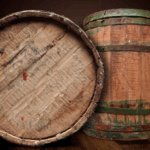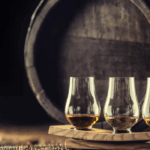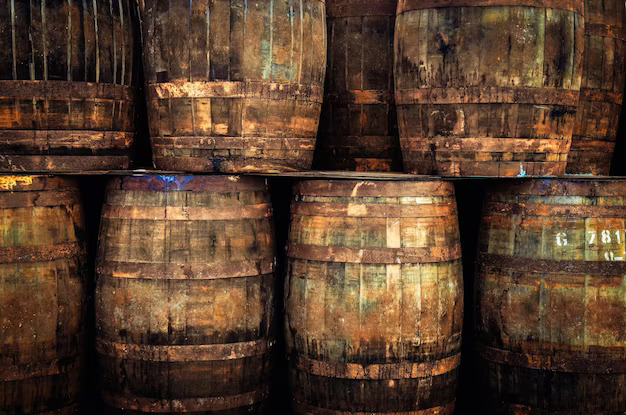
Barrel Aging for Beginners: The Basics You Need to Know
May 23, 2025
How to Make Your Whiskey Barrel Last Longer
June 5, 2025Tequila is a highly identifiable Mexican spirit. Made from the blue agave cactus, tequila is a popular drink in the entire world. While everyone knows the strong, overpowering taste of tequila, not all people know how its taste can be changed by tequila barrel aging.
In this article, we’ll take a closer look at how aging tequila in wooden barrels transforms its flavor, aroma, and appearance.
What Makes Tequila So Unique?
Aging tequila in wooden barrels significantly changes its flavor, aroma, and even its appearance over time. Tequila gets made from blue Weber agave plants, typically through a pretty rigorous distillation process. The piña—the heart of the agave—is slowly cooked, crushed, and fermented in large vats to produce a sugary liquid that’s distilled into tequila.
At this stage, the tequila is clear and unaged. It can now be sold and bottled in its exact form or aged in barrels. It is within barrel aging that alteration starts to take place.
Understanding Tequila Barrel Aging
The tequila aging process in oak barrels for some time before being bottled is called barrel aging. The tequila is placed in contact with the wood and the surrounding environment during this time. These interactions deeply impact the color, texture, and flavor of the tequila.
Barrel aging is an old tradition by which tequila gets complex and rich. The length of aging determines the type of tequila—each with distinct characteristics.
Varieties of Aged Tequila
1. Blanco (or Silver)
Blanco tequila is not aged or is briefly aged. It reveals the raw, unadulterated flavor of the agave plant.
- Aged: 0 to 2 months
- Color: Clear
- Flavor: Full-bodied, crisp, and full of agave flavor
2. Reposado
Reposado is “rested.” Reposado tequila has had time to age with smoother textures and richer flavor from the tequila barrel without sacrificing its agave foundation.
- Aged: 2 to 12 months
- Color: Pale gold
- Flavor: Balanced with undertones of oak, vanilla, and soft spice
3. Añejo
“Añejo” means “aged.” It’s an older tequila with a sweeter flavor that whiskey and cognac enthusiasts will enjoy.
- Aged: 1 to 3 years
- Color: Deep amber
- Flavor: Even stronger, with richer flavors such as caramel, chocolate, and toasted oak
4. Extra Añejo
This is the oldest tequila form. It is rich, and its tequila flavor transformation should be enjoyed slowly.
- Aged: More than 3 years
- Color: Brown to dark amber
- Flavor: Rich, smooth, and full-bodied with dried fruit, tobacco, and dark chocolate flavors
How Barrel Aging Affects the Taste of Tequila
Barrel aging impacts tequila in some critical ways:
1. Contributions New Flavors
The oak barrel contributes natural flavors to the tequila. They are:
- Vanilla
- Caramel
- Cinnamon
- Clove
- Toasted nuts
- Coffee or cocoa (in longer-aged tequilas)
The wood contains sugars and oils that impart tothe tequila during aging over time.
2. Softens Harsh Notes
Newly distilled tequila will contain a pungent or harsh alcohol flavor. Barrel aging mellows the spirit, softening it and making it palatable.
3. Richer Aroma
Aged tequilas have a fuller, more appealing aroma. The aroma can contain wood, spice, citrus, or sweetness, all depending on the barrel type used and duration of aging.
4. Darkens Color
Tequila is aged in the barrel and becomes darker with age. While Blanco tequila is transparent, other, older tequilas are pale gold to dark amber. This darkening is all natural and from the wood.
5. Adds Depth
As tequila ages, it accumulates layers of flavor. The layers are stacked upon one another, and with every drink, the drink becomes more complex. Complexity is one of the primary reasons aged tequila is usually consumed neat or over ice, and not in cocktails.
Role of the Barrel
History and the type of barrel also come into play when it comes to final flavor.
1. Type of Oak
- Most tequila is aged in American or French oak barrels.
- American oak will impart more sweetness and vanilla.
- French oak will impart spice and crisper structure.
2. New vs. Used Barrels
- Some barrels are new, and others might already have held bourbon, wine, or other spirits before.
- A used barrel imparts subtle nuances of the previous spirit, like bourbon’s sweetness of wine’s fruitiness.
3. Barrel Size
The smaller barrels contain a greater surface area touching the tequila and thus age the spirit more quickly. Big tequila barrels for sale provide a slower, more gradual aging.
Conclusion
Barrel aging is the most critical activity of tequila production. Barrel aging changes tequila from being bold and unaged into a silky, rich-tasting beverage full of character and flavor.
Knowing the aging process enhances your appreciation of tequila on a whole other level.

